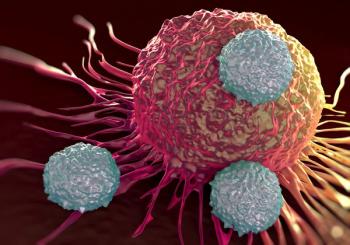
Strategies to Monitor Multiple Myeloma
Different markers and tests that are used to monitor disease status and treatment response in patients with multiple myeloma.
Episodes in this series

Robert Orlowski, MD, PhD: What are the different ways in which the disease status can be assessed? Let’s go backward this time. Caitlin, we’ll start with you. How do you look at disease in these patients?
Caitlin Costello, MD: A patient’s disease manifests in many ways. In many patients who have serum, studies can show us their degree of disease. Are there enough patients out there that their disease may not correlate between the extent of bone abnormalities or bone disease and the burden of the serum or urine abnormalities? Is that’s what you’re asking, Bob? You need to take a step back and look at the patient as a whole and make sure you’re being complete and thorough in evaluating the extent of disease, understanding just the variety of ways that can affect a patient’s body.
Robert Orlowski, MD, PhD: Definitely. All great points. Jeff, looking at disease status, what are the main things that you monitor?
Jeff Matous, MD: I have to admit, Bob, I do it differently when I’m more aggressive with patients. For example, a lot of us who are involved in treating younger patients are involved in transplant, and we’re used to staging patients with marrows and 24-hour urines and filling out essential data forms and everything. But in a transplant-ineligible patient, I rely mostly on what Caitlin said: serum markers and urine markers. Patients who present with symptomatic bony disease, I like repeating imaging to assess my response with using imaging techniques as well. I admit that I’m less likely to repeat a marrow in a transplant-ineligible patient just to see how we’re doing. That’s why even though I always wished for MRD [minimal residual disease] negativity, in my own practice I don’t try to reach that in my transplant-ineligible patients. I rely on imaging studies when appropriate and serum and urine markers.
Robert Orlowski, MD, PhD: Jeff, you brought up following up on radiology studies to look at bone lesions. For the folks out there who aren’t myeloma experts, what time point would you pick to follow up on a baseline radiograph?
Jeff Matous, MD: I won’t repeat an imaging study. For example, for a CT–PET [positron emission tomography] scan that maybe at baseline showed a hypermetabolic disease, I wait until I get a good response based on serum markers before I repeat that study, and usually not before 3 months, as long as my patient is responding clinically. If they say, “My bone pain is a lot better,” then I’m going to feel less of an imperative to repeat the study sooner. If they’re still complaining of pain, I’m not sure if my therapy is doing what I want it to do. I might do the study sooner.
Robert Orlowski, MD, PhD: Definitely. Larry, any other thoughts about how you monitor folks?
Larry Anderson, MD, PhD: It depends on which group of ineligible patients. If we’re talking about some of the folks who might be more functional and mostly chose to defer transplant, then those patients might follow them with more of these studies to make sure they’re doing OK without needing the transplant. That might be a situation when we consider doing a bone marrow. Looking at MRD for these patients, if it’s because there’s no chance they’re doing a transplant, then I’d definitely stick with the serological methods, watching the M-spike [monoclonal protein] and light chains and, if they had baseline imaging, following that up. We don’t necessarily have data if they don’t have a very deep remission, changing therapy or anything like that. I’m at least making sure that their response is going to be durable. But for these more infirm patients, I use serological studies.
Robert Orlowski, MD, PhD: Larry, both Caitlin and Jeff mentioned getting urines. Of course, those are a little bit of a pain in the tush—if you don’t mind the language—because of course you must collect these 24-hour things. It’s not convenient for men and especially not for women. Theoretically, they’re supposed to keep the bottles cold. Do you still do 24-hour urines, or do you just go with the CRM [certified reference material] serum-free light chain assay?
Larry Anderson, MD, PhD: I’ll do them all at baseline, and then it depends if they have a ton of light chains or protein in the urine. We’ll follow that up periodically, especially if we’re trying to confirm a complete remission periodically. We’ll do 1, but I mostly rely on the serum light chains for the month-to-month measurements.
Transcript edited for clarity.
Newsletter
Stay up to date on recent advances in the multidisciplinary approach to cancer.





















































































